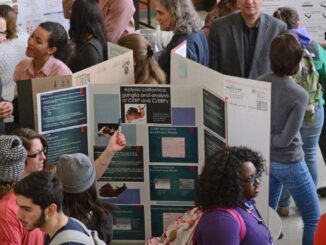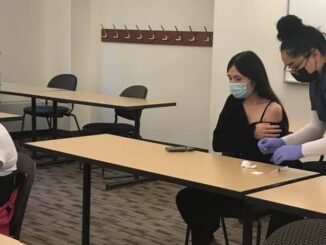
Chelsea
Staff Writer
The Modern Foreign Languages department sent out two core curriculum language proposals to the University Curriculum Committee (UCC) for approval.
One of the proposals will affect French and Italian core requirements while the other proposal will affect Spanish core course requirements.
The Modern Foreign Languages department recognizes two tracks for learners, the L2 and HL. L2 represents learners who take Italian, French, or Spanish as a second language class. HL represents learners who are heritage speakers of any of the three languages.
Veena Carlson, the Italian professor, said the foreign language requirements went through many changes in the last 20 years, depending on the changes in the student body. Tonia Triggiano, Italian professor and chair of Foreign Language department, said there were more Italian heritage speakers 15 years ago.
“One time, Italian also had heritage students, we don’t have them anymore” Triggiano said. “Our generations have moved beyond the immigrant stage. Now, most of our students are second language learners, as is in French”.
According to Carlson, the linguistic aspect does not correspond to the cultural aspect of language.
“It’s an observation that because you self-identify as Hispanic, does not mean that you speak advanced Spanish” Carlson said. She noted that Dominican has a significant number of second language learners and a group of linguistic heritage learners.
“Now as faculty, we have to weigh the needs of both of those groups of students,” Carlson said, “It’s our job to consider all the students on campus”.
Lisa Petrov, project director at Title V program and assistant professor of Spanish, points out that the racial categories with the largest population taking two elementary language classes are African American and white.
According to Language Placement Results collected at SOAR provided by Petrov, the 6-year average for students required to take 8 credits language classes is 82.5% for African American, 63.9% for white, and 29.8% for Hispanics of any race.
Petrov said that for students who have taken the language requirements, many will not remember the language if they stop learning beyond the introductory level.
“What is the learning that we actually want students to walk away with” Petrov said. “And for us in Spanish, for many students, mostly the white and the black students, the cultural knowledge, knowledge of the community, knowledge of the people who speak the language, is as important, if not more important, than learning to speak the language itself”.
Carlson considers a full exposure of language for a year, in 101 and 102 classes, would enable students to develop elementary proficiency. She said that Italian and French propose to maintain the two elementary courses, reducing them to three credit classes, while also allowing students to place out of the language requirements.
There is also an Italian and French proposal for an intercultural competency course that can be tagged with courses from other departments. A department could apply to fulfill the cultural competency of the language if it meets the learning goals. Carlson emphasized flexibility for students who take classes in the Modern Languages Department.
In the Spanish language proposal, one of the points is multicultural and civic engagement with the language. Petrov said Spanish believed reducing the 8-credit requirement to a 4-credit requirement either at 100 or 200 level would be beneficial for both Spanish learners and heritage speakers.
“Our proposal would have more Latinx students taking language that wouldn’t, but it also has black and white students taking less language than they otherwise would have to” Petrov said.
Petrov believes that there are differences between the languages that cannot be resolved in a single proposal.
“We don’t want to tell them [Italian and French] what to do. But we also don’t want to be told that we want to do things a particular way that we can’t do it that way and we don’t think it’s right for our students” Petrov said.
“I think there is a way to take what Spanish wants to do for the heritage learners,” Triggiano said, “and take what French and Italian want to do with the second language learners and come up with some kind of proposal that will serve both groups, I think that’s possible”.
Carlson, Petrov and Triggiano agreed there is not much consideration for students of other language groups, such as Polish speakers, International students, Asian students, etc.
UCC received the Modern Language Department proposals from the core review sub-committee and seeks the main objectives for a core language requirement. On the meeting in Feb. 18, the committee saw the presentations of both two proposals.
According to Timothy Milinovich, chair of the UCC, a motion from UCC voted 12 to 2 for sending the proposal to a sub-committee, where further recommendations of the two proposals will be made in April.
“I like a lot of things about both proposals” Milinovich said. “Due to my particular position as UCC chair, I will defer from making specific comments about them at this time. But I can say I really respect the hard work that went into them, I greatly enjoy talking with the proposing groups about the curriculum”.
According to Milinovich, after the proposals are reviewed by the UCC, they will be recommended to the Faculty Senate. The Senate will make commandments or changes at meetings open to all faculty. After the Senate reviewed the proposals, the University Collegium, which includes all faculty members, will vote on the proposals.
Petrov mentioned the importance of student input in the core language requirement changes. On March 5, a Town Hall on Spanish Core Language Requirement will be held in Palmer 108.



